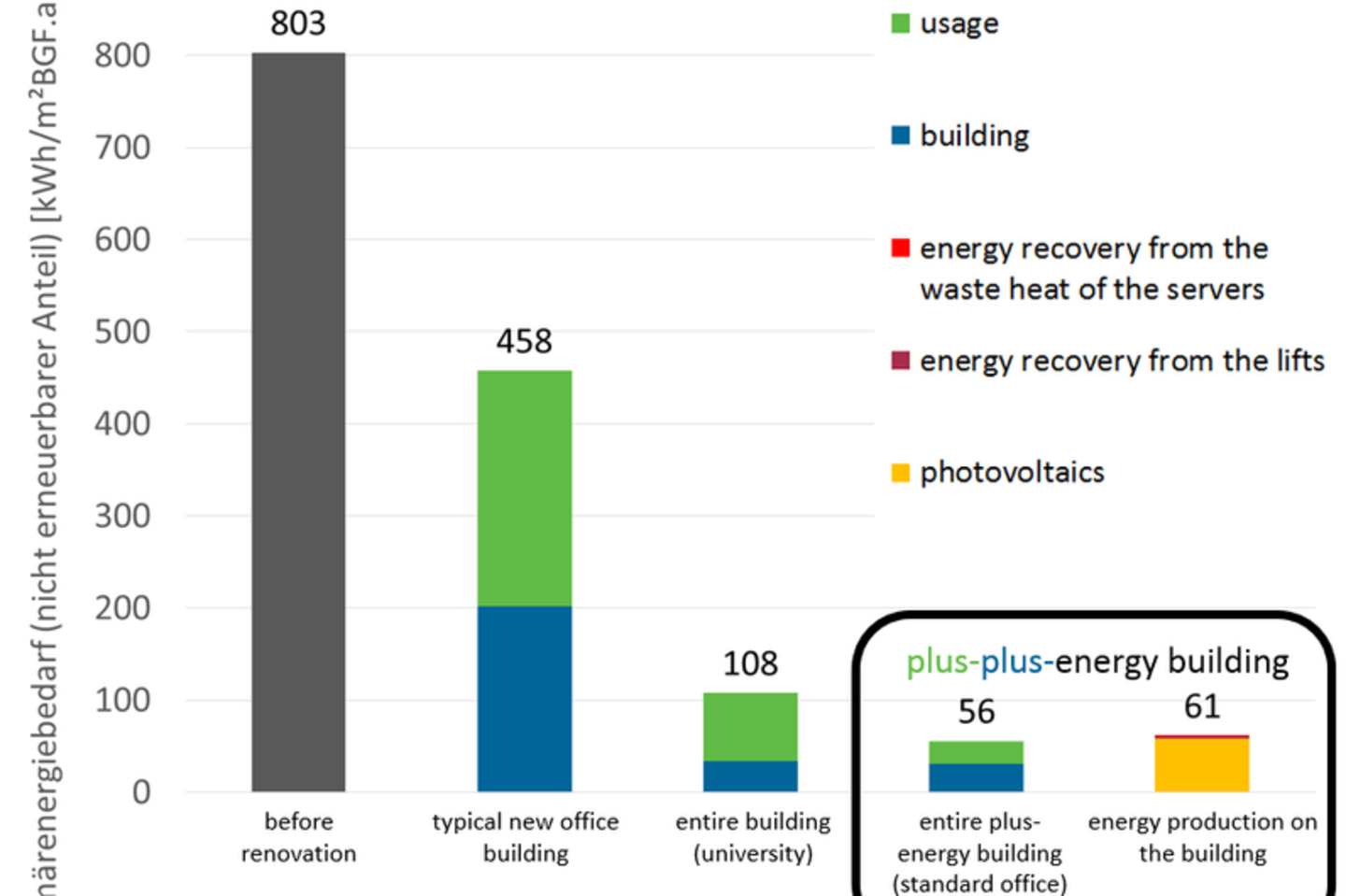
© TU Wien, Foto: Matthias Heisler
With "TU UniverCity", the TU Wien is carrying out its building projects to expand the qualities for research and teaching. In addition to the purely structural implementation, the building project is about establishing a future-oriented, self-confident and sustainable university culture. More efficient space utilization concepts will be developed and thus improved conditions for staff and students in research, teaching and administration.
The Plus-Energy-Office Tower is visible proof of this approach as a built research project. It is the world's first high-rise office building that aims to feed more energy into the power grid than is needed for the building's operation AND use.
You can't just mount photovoltaics on a house and then think that's an energy-conscious building. We included the entire usage in our calculations, right down to the computers and the coffee machine. So maybe we should call it a plus-plus building. In any case, it's the greatest house in the world.
The integral building concept not only demonstrates a new definition of the term "energy efficiency", but above all one thing: that plus-energy office buildings represent not only technically, but above all economically realistic concepts for the future of working on and in the building.
With the "Plus-Energy Office Tower", TU Wien in cooperation with the Federal Ministry of Science, Research and Economy (BMWFW) and the Bundesimmobiliengesellschaft (BIG) realized a research and construction project that has never existed in this form before.

Energy balance
The building generates about 5 kWh/(m²BGF.a) more energy than its office area consumes in total, thus meeting the definition of a plus-plus energy building. The energy consumption is divided into two categories: "building" and "use". The former includes all the energy needed to make the building basically usable (heating, cooling, lighting, etc.) and the latter actually includes the energy consumption that occurs during use (computers, telephony, equipment in social rooms, etc.).
The dominant forms of energy today are solar power and wind power. The key challenges will be to match supply and demand. Various types of storage and flexibility measures will also play an important role.